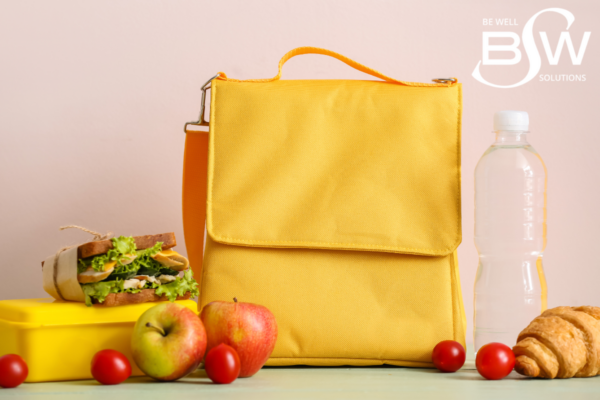Whether returning to school this fall or continuing the daily work grind, you might consider packing your lunch. Not only does packing your lunch help you stay on track with healthier eating habits, but it can also help you save money each week! We’ve compiled six tips for packing a healthy, balanced, and nutritious midday meal.
- Keep It Colorful
Fruits and vegetables are a standout source of nutrients like fiber, vitamins, and minerals. The various colors in these foods represent different nutrients. By keeping your lunch colorful, you’re incorporating an array of necessary nutrients into your daily diet. Fruits and vegetables are nutritious carbohydrates that help fuel your body with energy for the day. Keep these foods budget-friendly by choosing fresh produce in season or opting for no-sodium-added and no-sugar-added canned or frozen varieties.
- Choose Whole Grains
Whole grains are an excellent energy source and contain significantly more nutrients than refined grains. They are packed with more fiber, vitamins, and minerals since they contain all parts of the grain. Refined grains lose the bran and germ during milling processes, eliminating a good portion of nutrients. Ramp up the nutritional value of your lunch by swapping out your white sandwich bread for nutrient-dense whole-grain bread, or use brown rice in your homemade burrito bowls or stir-fries.
- Pick Your Proteins Wisely
Incorporating protein into your lunch will help you feel fuller throughout the day because your body digests it more slowly. My Plate1 states that “proteins function as building blocks for bones, muscles, cartilage, skin, and blood. They are also building blocks for enzymes, hormones, and vitamins.” Choosing leaner proteins like chicken, turkey, or fish will increase nutrient intake while managing the saturated fat content. You can also incorporate other high-protein foods into your lunch as snacks, such as Greek yogurt, peanut butter, beans, eggs, or nuts.
- Add In Healthy Fats
Fats are necessary for energy, body function, and absorbing other nutrients. However, some fats are healthier than others. Food containing trans and saturated fats, like margarine, butter, fried foods, fattier meats, and some baked goods, can raise LDL or bad cholesterol. Consume these unhealthy fats more sparingly. Healthier, unsaturated fats can help to lower bad cholesterol and raise good HDL cholesterol. Examples of unsaturated fats to include in your lunch are avocados, olive oil, peanut butter, nuts and seeds, and tuna.
- Rethink Your Drink
Added sugar can add up quickly, especially in sugary drinks like soda pop, sweetened coffee or tea, juice, and energy drinks. They contain calories with little to no additional nutrition. Sugar can be a quick energy source but tends to leave you feeling sluggish and hungrier afterward. The American Heart Association recommends a daily limit for added sugar of less than 36 grams for men and less than 25 grams for women (American Heart Association2). A twelve-ounce can of pop can contain around 40 grams of sugar, which surpasses the daily recommendations for both men and women. Limit sugar and sweetened creamer in coffee and tea, and choose water with your lunch to keep hydrated.
- Practice Food Safety
Practicing food safety is just as important as packing healthy foods. You’ll want to keep hot foods hot and cold foods cold. If you can access a refrigerator, put your lunch box or bag in it as soon as you arrive. If not, consider using an ice pack or frozen water bottle to keep your lunch cold in an insulated container. Use microwave-safe containers for foods that need to be warmed, or keep them hot in a thermos. Keep your lunch healthy and nutritious by paying attention to expiration dates, how long food has been sitting out, or how old it is.
Continue Reading August 2024 Newsletter: Hybrid Work and Wellness: Balancing Health in a Remote Work Environment

